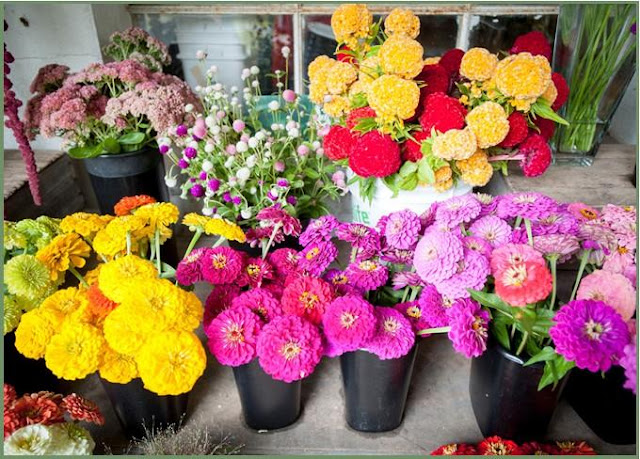
Master gardeners offer free workshop on flower growing, harvesting and arranging

|
|
Learn how to make the most of flowers in a free in-person workshop Saturday.
(Photo courtesy El Dorado County master gardeners)
|
Do you dream of being a flower farmer? Or do you just want to improve your “blooming” skills one bouquet at a time?
Find the advice you need to get started during a free in-person workshop, presented by the UC Cooperative Extension Master Gardeners of El Dorado County at Sherwood Demonstration Garden.
Set for 9 a.m. Saturday, May 21, “Bouquets of Flowers: How to Grow, Harvest and Arrange” will take you from garden to vase, step by step.
“This free class explains how to use flowers from your garden for flower arranging,” say the organizers. “Join Master Gardeners Ada Brehmer, Anne Bettencourt and Jan Keahey to discuss the best plants to plant, how and when to harvest, and how to arrange the cut flowers in different containers. Tips will be discussed on how to preserve the arrangement.”
Get some hands-on practice, too, during this three-hour class.
“If you want to take home a lovely, self-made arrangement, please bring a bouquet of flowers from your garden – or your local store – and your favorite vase,” say the master gardeners.
Sherwood Demonstration Garden is located at 6699 Campus Drive, Placerville.
In addition to the workshop, master gardeners also will be hosting an Open Garden at Sherwood on Saturday morning from 9 a.m. to noon. Check out 16 demonstration gardens and get advice from master gardeners as they tend their projects.
Details and directions: https://mgeldorado.ucanr.edu/
Comments
0 comments have been posted.Sacramento Digs Gardening to your inbox.
Sites We Like
Garden Checklist for week of July 21
Your garden needs you!
* Keep your vegetable garden watered, mulched and weeded. Water before 8 a.m. to reduce the chance of fungal infection and to conserve moisture.
* Feed vegetable plants bone meal, rock phosphate or other fertilizers high in phosphate to stimulate more blooms and fruiting. (But wait until daily high temperatures drop out of the 100s.)
* Don’t let tomatoes wilt or dry out completely. Give tomatoes a deep watering two to three times a week.
* Harvest vegetables promptly to encourage plants to produce more. Squash especially tends to grow rapidly in hot weather. Keep an eye on zucchini.
* Pinch back chrysanthemums for bushy plants and more flowers in September.
* Remove spent flowers from roses, daylilies and other bloomers as they finish flowering.
* Pinch off blooms from basil so the plant will grow more leaves.
* Cut back lavender after flowering to promote a second bloom.
* It's not too late to add a splash of color. Plant petunias, snapdragons, zinnias and marigolds.
* From seed, plant corn, pumpkins, radishes, winter squash and sunflowers.